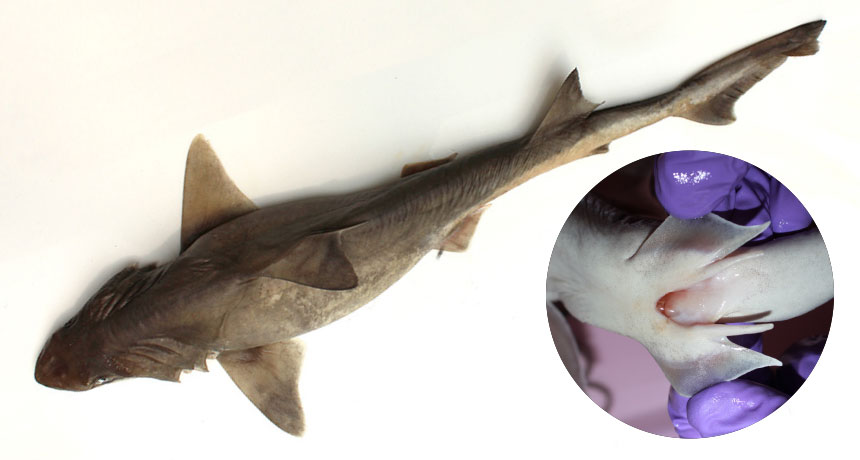Surprise! This shark looks like a male on the outside, but it’s made babies
Bigeye houndsharks found off India’s coast had female reproductive systems

BOY BITS Male bigeye houndsharks have reproductive organs called claspers on their underbellies (inset), which have always been an easy way to distinguish them from females.
R. Hariprasath